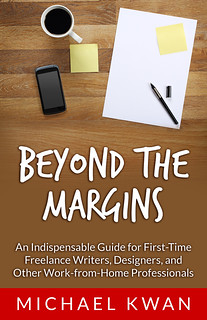Filled with despair, I looked at the contents of each storage unit and had a flash of revelation. I didn’t need most of the things that were in them! Although I thought that I had been tidying, in fact I had merely been wasting my time shoving stuff out of sight, concealing the things I didn’t need under a lid. Putting things away creates the illusion that the clutter problem has been solved. But sooner or later, all the storage units are full, the room once again overflows with things, and some new and “easy” storage method becomes necessary, creating a negative spiral. This is why tidying must start with discarding.
After countless recommendations, I recently finished reading The Life-Changing Magic of Tidying Up by Marie Kondo. Almost everyone I asked told me that this was the definitive tome on how to declutter. Admittedly, I’ve always been a pack rat, keeping innumerable objects “just in case.” I might need that extra cable. That box could be useful. Waste not. Want not. Right?
Over the years, I’ve accumulated several storage boxes and organizational products. I once kept two sets of letter trays, each stacked four high, thinking it would help organize all the loose sheets of paper kicking around on my desk. Each level could be used for something, but eventually the lower three tiers just accumulated clutter that I would rarely ever reference. And the top tier just got stuff piled on it, higher and higher and higher.
And that’s just what was visible. Marie Kondo is right. We have a habit of packing things away into boxes or other “storage solutions” thinking that we’ve successfully decluttered. All we’ve done is put the mess out of sight. It was only when we moved to our current home that I was forced to face the mountain of stuff I stashed away in the garage. I kept all of my class notes from my university days, organized into binders. But why? It wasn’t like I was ever going to reference them again.
I had been a little smarter, I would have realized before I became so neurotic that focusing solely on throwing things away can only bring unhappiness. Why? Because we should be choosing what we want to keep, not what we want to get rid of.
Perhaps this statement is a little idealistic on the part of Marie Kondo. There are many objects that don’t bring me joy, but they are necessary to my modern existence. I don’t love my printer or my trash can or my extension cords, but I need them.
That being said, I understand the sentiment. For many of us, decluttering can feel like a negative experience. We’re going through our things and deciding what has to go. Considering that I describe my home office environment as one of organized chaos, I can’t only choose what to keep. I have to choose what to discard.
Perhaps that is the most challenging aspect of this growing push toward minimalism. Each time we choose to throw something away (or donate it to charity), we face the same hesitation: what if I need this later? Especially when it comes to sentimental items, what if I’ll miss having this later? There’s no turning back.
But when we really delve into the reasons for why we can’t let something go, there are only two: an attachment to the past or a fear for the future.
You see what I just did with my previous statement? Marie Kondo addresses that head on here. I can’t let go of souvenirs and sentimental items, because of my attachment to the past. Similarly, I can’t toss certain things, because I think I might want them in the future. In both cases, we’re keeping stuff “just in case.”
While I’m not convinced that I can fully embrace Marie Kondo and her KonMari Method, I can take some of its lessons to heart. Thus far, I’ve collected one large garbage bag of clothing for donation… and I don’t have much clothing to begin with. I’ve also gathered up one box of books and tossed one large trash bag full of junk. This isn’t quite the “do it all in one fell swoop” approach that Kondo champions, but it’s a start.
Have you read Marie Kondo’s book or watched her new series on Netflix? What do you think of her approach to tidying up?





If you boil it down to her basics, it’s really finding a home for everything and only keeping things that make you happy. I like her a lot.